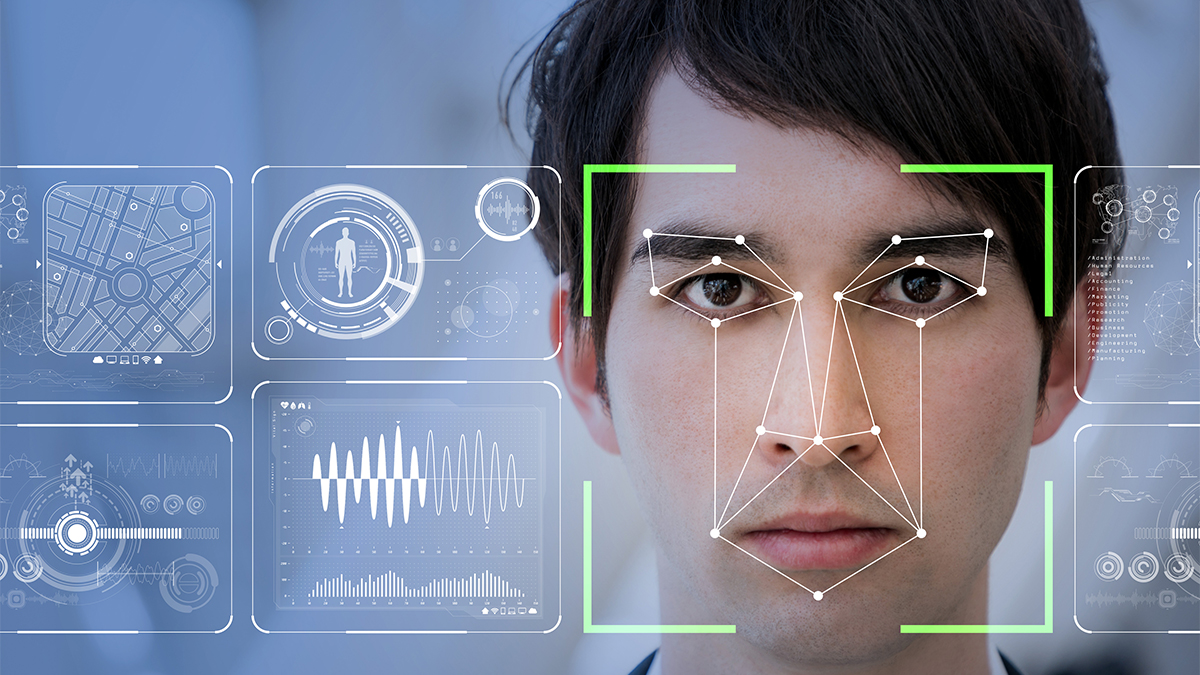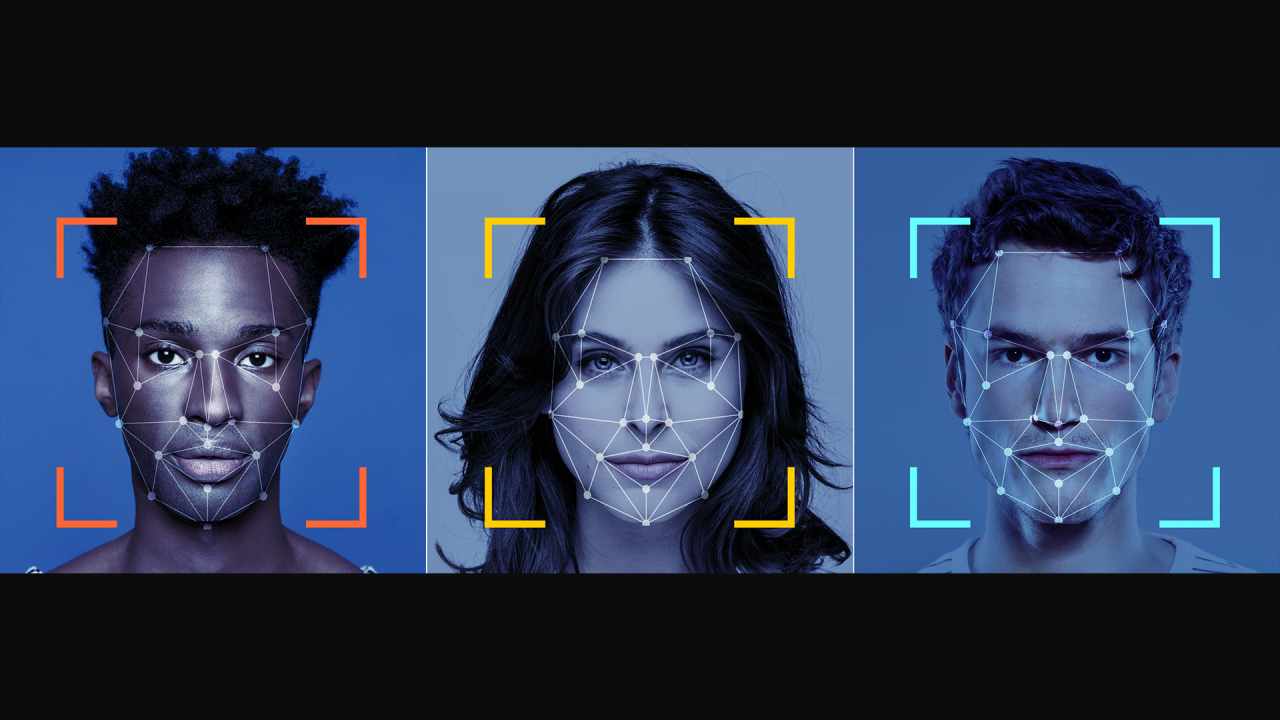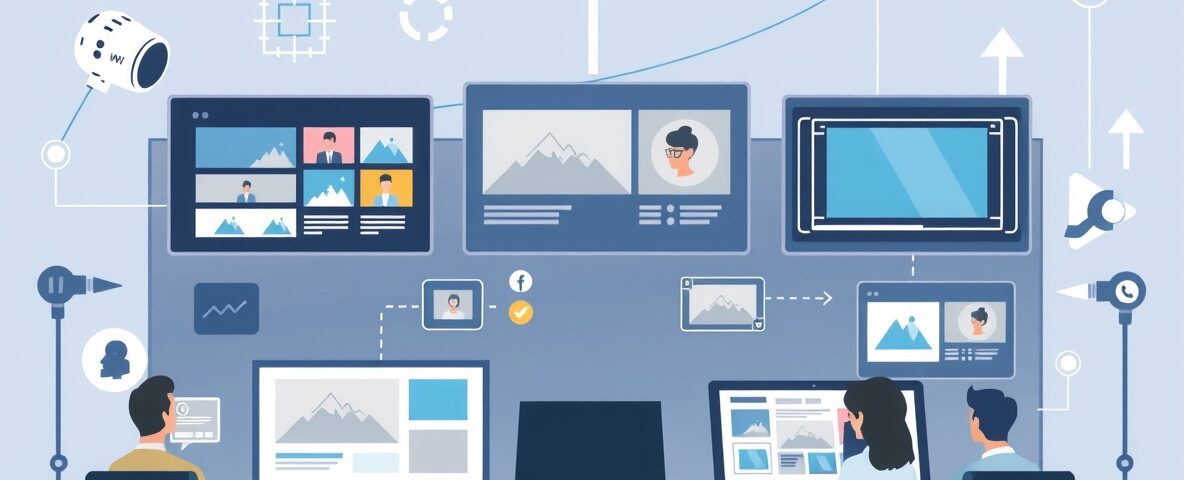
How B2B Lead Generation in Asia Is Evolving Beyond Trade Shows and Cold Calls
September 18, 2025
The Power of Networking: How Events Drive B2B Lead Generation Success
September 19, 2025In the ever-evolving landscape of digital marketing, businesses are constantly on the lookout for new ways to captivate their audience and remain competitive. The old adage, “A picture is worth a thousand words,” has never been more relevant. Visual content, whether in the form of images or videos, has become the cornerstone of digital marketing. It’s no longer enough to rely solely on text-based content; marketers must harness the power of visuals to convey their message effectively.
The Power of Visual Content
Visual content has a unique ability to grab our attention and convey complex ideas quickly. When we see an image or watch a video, our brains process the information faster and retain it longer than when we read text. This is why platforms like Instagram, TikTok, and YouTube have seen explosive growth. They offer a rich visual experience that resonates with audiences of all ages.
Visual content isn’t limited to social media, though. It’s an integral part of website design, email marketing, and even traditional advertising. The rise of smartphones with high-quality cameras has made it easier than ever for businesses to create compelling visual content.
The Role of AI in Marketing
So, what does AI have to do with all of this? Artificial Intelligence, with its ability to process and analyze vast amounts of data, has taken visual content to the next level. AI can not only help businesses create eye-catching visuals but also understand the preferences and behaviours of their audience.
One of the most significant ways AI is transforming marketing is through Image and Video Recognition. These technologies allow machines to “see” and “understand” visual content. It’s not just about recognizing objects; AI can identify faces, emotions, text, and even context within images and videos.
Imagine a clothing retailer using AI to recognize the latest fashion trends in user-generated content on social media. They can then tailor their marketing campaigns to match those trends, ensuring their products remain relevant and appealing to their target audience.
AI’s ability to understand visual content goes beyond mere recognition. It can analyze the emotions displayed on people’s faces in videos, helping marketers gauge the effectiveness of their campaigns. Are viewers smiling, laughing, or showing signs of interest? AI can provide real-time insights that inform marketing strategies.
In essence, AI is not just a tool for automation; it’s a tool for enhancing creativity and personalization in marketing. It’s the bridge that connects the power of visual content with data-driven insights.

Understanding Image Recognition
What Is Image Recognition?
Image Recognition, often referred to as computer vision, is the technology that enables machines to interpret and understand the content of images. It’s like giving computers the ability to “see” and make sense of what they see. This technology relies on complex algorithms and deep-learning neural networks that mimic the human visual system.
At its core, Image Recognition involves breaking down an image into its fundamental components. It identifies shapes, objects, colours, and patterns within the image. This process is more than just identifying static elements; it can also recognize dynamic elements, such as movement and changes in colour.
The Evolution of Image Recognition
Image Recognition has come a long way since its inception. In the early days, systems could only perform basic shape recognition. For example, they could distinguish between circles and squares but struggled with more complex objects. However, with the advent of deep learning and convolutional neural networks (CNNs), Image Recognition has made tremendous strides.
Today’s Image Recognition systems can identify a wide range of objects and even understand context. They can differentiate between various dog breeds, recognize landmarks, and interpret handwritten text. The level of detail and accuracy achieved is nothing short of astounding.
Real-Life Applications
The practical applications of Image Recognition are vast and continually expanding:
- Medical Diagnosis: In the field of medicine, Image Recognition plays a crucial role in diagnosing diseases and conditions. Radiologists use it to analyze X-rays, MRIs, and CT scans, aiding in the early detection of illnesses.
- Retail: E-commerce giants employ Image Recognition to enhance the shopping experience. Product recommendation systems analyze user-generated images to suggest products similar to what customers are wearing in photos.
- Automotive: Self-driving cars heavily rely on Image Recognition to navigate and make split-second decisions. They can detect pedestrians, read road signs, and recognize other vehicles, ensuring safety on the road.
The evolution of Image Recognition is a testament to the power of AI and deep learning. As these technologies continue to advance, we can expect even more remarkable applications in various industries.

Video Recognition: The Next Frontier
Video Recognition Explained
If Image Recognition is about understanding static visuals, Video Recognition takes things a step further by analyzing dynamic content. Video Recognition enables machines to “watch” and “comprehend” videos in much the same way we do.
At its core, Video Recognition involves tracking objects, detecting motion patterns, and interpreting audio cues within videos. This enables AI systems to recognize not only the objects and people in a video but also the actions and emotions displayed.
Imagine a scenario where a security camera uses Video Recognition to identify a person breaking into a building. The system not only alerts security personnel but also understands the intruder’s behaviour and emotional state, providing valuable insights for responding appropriately.
Benefits of Video Recognition
The advantages of Video Recognition in marketing and beyond are profound:
- Content Personalization: Video platforms like YouTube and Netflix use Video Recognition to analyze user preferences and recommend content tailored to individual tastes. This personalization keeps viewers engaged and coming back for more.
- Engagement Tracking: Marketers can measure viewer engagement at various points in a video. They can identify which scenes or moments resonate most with the audience, allowing for data-driven content optimization.
- Emotion Analysis: Video Recognition can go beyond recognizing faces; it can also decipher emotions. This opens up new possibilities for gauging audience reactions. For instance, a video ad can be fine-tuned based on how viewers respond emotionally.
AI Marketing in Action with Video
Let’s explore a practical example of how AI Marketing leverages Video Recognition:
Imagine an e-learning platform that offers a wide range of educational videos. Using Video Recognition, the platform tracks how students interact with the content. It identifies when students are most engaged, where they might be struggling, and even detects signs of frustration or confusion.
This real-time data enables the platform to adapt its approach. If a student appears confused, the system can offer additional explanations or supplementary materials. If a student shows enthusiasm for a particular topic, the platform can suggest related courses or materials.
The result is a highly personalized learning experience that caters to the unique needs and preferences of each student. This level of personalization, made possible by Video Recognition, is reshaping education and marketing alike.

The SEO Connection
Enhancing SEO with Visual Content
Search Engine Optimization (SEO) is the art and science of making your online content more discoverable by search engines like Google. While traditional SEO has focused primarily on text-based content, the rise of visual content has added a new dimension to optimization.
Visual content, such as images and videos, plays a crucial role in SEO for several reasons:
- User Engagement: Visual content enhances user engagement, leading to longer time spent on your website. Search engines consider this a positive signal, potentially boosting your rankings.
- Reducing Bounce Rate: If your website includes engaging visuals, visitors are less likely to leave immediately (bounce). A lower bounce rate indicates that your content is relevant and valuable, which can positively impact SEO.
- Enhanced Click-Through Rates: Visuals in search results, such as rich snippets and video thumbnails, attract more clicks. Higher click-through rates (CTR) can lead to improved rankings.
- Comprehensive Content: Visuals can help explain complex topics or concepts more effectively than text alone. When search engines recognize the comprehensiveness of your content, it can result in higher rankings.
Tips for Optimizing Visual Content
To leverage visual content effectively for SEO, consider the following tips:
- High-Quality Images and Videos: Use clear, high-resolution visuals that are relevant to your content. Blurry or low-quality visuals can deter users.
- Descriptive Alt Text: For images, provide descriptive alt text. Alt text not only helps visually impaired users understand the content but also provides context for search engines. Use relevant keywords when appropriate.
- Mobile Optimization: Ensure that your visuals are responsive and load quickly on mobile devices. Mobile-friendliness is a significant factor in SEO rankings, and slow-loading visuals can harm the user experience.

Challenges and Ethical Considerations
Bias in AI Recognition
While AI Recognition technologies have made tremendous strides, they are not without their challenges and pitfalls. One significant concern is the presence of bias in AI systems, including Image and Video Recognition.
Bias in AI can manifest in various ways. For example, if an AI system is trained primarily on images of a particular demographic group, it may perform poorly when presented with images from underrepresented groups. This can lead to inaccurate or unfair outcomes.
One well-documented example of bias in Image Recognition involves racial and gender biases. Some AI systems have been found to misidentify or mislabel individuals based on their race or gender. This can have serious consequences, especially in contexts like law enforcement or hiring, where AI systems are used for decision-making.
Addressing bias in AI Recognition is a complex and ongoing challenge. It requires diverse and representative training data, continuous monitoring and testing, and the development of fairness-aware algorithms. Marketers and developers must be aware of these issues and take proactive steps to mitigate bias in AI systems.
Privacy Concerns
As AI Recognition technologies become more advanced, they also raise concerns about privacy. AI can now identify individuals in images and videos with a high degree of accuracy, even in large crowds. While this capability has valuable applications in security and law enforcement, it also raises privacy implications.
Consider the use of facial recognition technology in public spaces. Some cities have deployed facial recognition systems for purposes like tracking criminal suspects or monitoring crowds at events. While these applications have potential benefits, they also raise questions about surveillance and individual privacy.
Marketers must navigate this landscape carefully. Collecting and using personal data, including facial images, for marketing purposes can raise privacy concerns. It’s essential for businesses to be transparent about their data practices and obtain appropriate consent from individuals when necessary.
Ethical Marketing Practices
In the era of AI-powered marketing, ethical considerations are paramount. Marketers must adhere to ethical practices that respect the rights and choices of consumers. Here are some principles to guide ethical marketing in the context of AI Recognition:
- Transparency: Marketers should be transparent about the use of AI in creating content or making recommendations. Users have the right to know when AI is involved in shaping their experiences.
- User Control: Provide users with options to control their data and privacy settings. Allow them to opt out of personalized content recommendations if they wish.
- Data Security: Safeguard user data with robust security measures. Data breaches can have severe consequences, both for individuals and businesses.
- Fairness: Ensure that AI systems are designed and trained to be fair and unbiased. Regularly audit and test AI systems for bias and fairness.
- Consent: Obtain clear and informed consent when collecting and using personal data. This includes obtaining consent for the use of facial images in marketing materials.
Ethical marketing practices are not only a matter of compliance but also a way to build trust and long-term relationships with customers. Marketers who prioritize ethics are more likely to earn the loyalty of their audience and avoid reputational damage.

The Future of AI Marketing
AI-Generated Visual Content
The future of AI marketing is filled with exciting possibilities, and one of the most transformative trends is the emergence of AI-generated visual content. AI algorithms have advanced to the point where they can create stunning visuals from scratch.
Imagine needing a new brochure, website banner, or social media post. Instead of hiring a designer or spending hours searching for stock images, you can simply describe your vision to an AI-powered design tool. Within moments, it generates a visually appealing design tailored to your specifications.
AI-generated visuals are not limited to static images. They can include animations, infographics, and even video clips. This technology streamlines content creation, reduces costs, and ensures consistent branding across all marketing materials.
Moreover, AI can analyze audience data and preferences to generate visuals that resonate with specific target demographics. Whether you’re targeting Gen Z with vibrant, dynamic visuals or appealing to Baby Boomers with nostalgia-inducing imagery, AI can tailor content to match your audience’s preferences.
Augmented Reality (AR) Marketing
Another frontier in AI marketing is Augmented Reality (AR). AR technology overlays digital content onto the real world, creating immersive and interactive experiences for users. While AR has gained popularity in gaming and entertainment, it’s also making significant inroads in marketing.
Imagine shopping for furniture online and being able to use your smartphone to see how a new sofa would look in your living room. This is precisely what AR can offer. It allows consumers to “try before they buy” and make more informed purchasing decisions.
AR marketing extends beyond retail. It can be applied in various industries, from tourism (virtual tours of destinations) to automotive (configuring and visualizing car features) to education (interactive learning experiences). The key is to provide value and engagement through AR experiences that resonate with your target audience.
Predictive Marketing Algorithms
AI’s predictive capabilities are becoming increasingly sophisticated, and this has profound implications for marketing. Predictive marketing algorithms use machine learning to analyze user behaviour, anticipate needs, and deliver hyper-targeted content.
Consider an e-commerce platform that employs predictive algorithms. As users browse products, the AI system tracks their interactions, from the items they view to the ones they add to their cart. It also considers past purchase history and demographic information.
Based on this data, the AI can make highly accurate predictions. For instance, it can anticipate the user’s preferred product categories, preferred price range, and even the optimal time to send personalized promotional offers. This level of personalization enhances the user experience, increases conversion rates, and boosts customer satisfaction.
Moreover, predictive marketing algorithms can adapt in real-time. If a user’s behaviour changes or new data becomes available, the AI system can adjust its recommendations accordingly. This agility ensures that marketing efforts remain relevant and effective.
In conclusion, Image and Video Recognition, powered by Artificial Intelligence, are redefining the landscape of AI marketing. These technologies offer marketers the tools to create more engaging and personalized content, enhance SEO, and tap into exciting opportunities like AI-generated visuals, Augmented Reality experiences, and predictive marketing.
The Transformative Power of Image and Video Recognition
From the evolution of Image Recognition to the ethical considerations surrounding AI, we’ve explored the multifaceted nature of these technologies. They hold the power to revolutionize not only how businesses connect with their audience but also how they shape the future of marketing.
Embracing AI for Marketing Success
As we look to the future, businesses that embrace AI in their marketing strategies will be at the forefront of innovation. AI-powered marketing isn’t just about automation; it’s about unleashing creativity, personalization, and data-driven insights to deliver exceptional customer experiences.
The journey of AI marketing is just beginning, and the possibilities are boundless. It’s a journey marked by innovation, ethics, and the relentless pursuit of better ways to engage and connect with audiences in the digital age. By embracing AI, businesses can cast a wider net and navigate the ever-changing seas of digital marketing with confidence and success.


